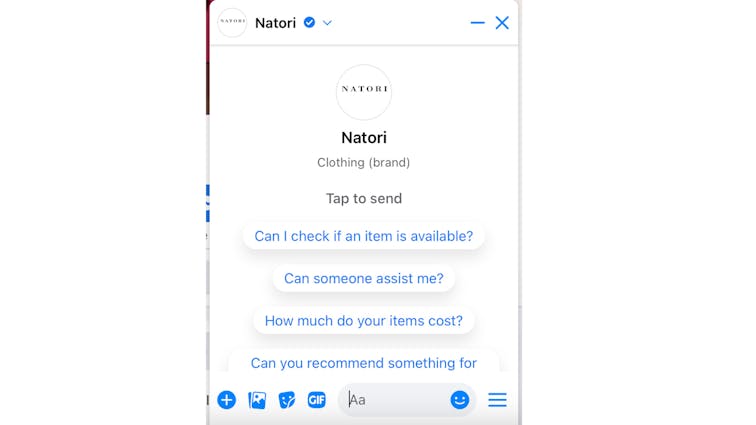
What is Conversational Commerce Platform ?
Consumers today want to purchase everything from necessities to luxury products on the go. Can just competitive prices boost the ecommerce scenario? Not quite.
Customers today value an engaging and positive customer experience above all: 80% of consumerswill pay more to enjoy a better shopping experience.
So, how can you deliver a premium customer experience on your ecommerce platforms?
By interacting with customers and offering instant customer support through chatbots and customized solutions for their queries. What better way to interact than communicating with potential customers through messaging apps, chatbots, or voice assistance?
This idea is known as conversational commerce or chat commerceand was proposed by Chris Messina in 2015. Business owners are since cashing in on the power of conversations to provide customized recommendations, curate Wishlist’s, and interact with consumers to enhance their shopping experience.
What is Conversational Commerce?

Conversational commerce leverages AI assistance through chatbots or voice technology to interact with customers.
Now, brands and customers can engage with one another. The latter can raise queries, contact customer assistance, view products, read reviews, purchase products, and complete their payments from the safety of messaging apps like Facebook Messenger.
Businesses can also send order confirmation notifications and tracking details through messaging apps.
But why this sudden shift in marketing strategies? As technology takes in more users through smartphones and tablets, there is an evident rise in messaging app users.
WhatsApp, the most popular messaging app, has over 2 billion users globally. Facebook Messenger has a whopping 1.3 billion users worldwide. With such staggering numbers, messaging apps offer an alluring customer base to business entrepreneurs.
Conversational commerce platforms allow businesses to connect with consumers on apps where they already exist. Thus, enterprises can organically push their products, build a genuine relationship with consumers, and drive sales on these messaging apps.
Chat commerce eliminates the complex and expensive marketing strategies of directing customers to blogs and websites through SEO.
With loads of content available today, holding clients’ attention for long stretches is tricky. If your websites are SEO-optimized, you might enjoy higher traffic but at the cost of a personal touch.
With conversational commerce platforms, businesses can merge SEO optimization with relatable and personalized content. Moreover, customers can connect with brands and make purchases without ever leaving the chat applications or having to toggle between websites
How Does a Conversational Commerce Platform Work?
In this digital age, the attention span of consumers is ever-declining. It becomes a task for them to filter out the best product from thousands of products listed on ecommerce websites.
What if the brand can provide personalized advice through conversations based on user preferences? Instead of bombarding consumers with mainstream emails and banners, conversational commerce relies on a 1:1 dialogue to convert each conversation into sales.
Chat** commerce** moves away from generic content and makes personalized recommendations for customers to make it easier and quicker for them to find what they need. This personal flair satisfies users’ needs and revolutionizes the brand-customer relationship.
Conversational commerce strategies drive customers through the sales funnel in five stages. Let’s break them down:
1. Building Awareness
You could own a business, design interactive websites, and offer premium services. But would this guarantee a stellar sales record? No. You would have to close up shop if your target audience does not know about your brand.
Hence, building brand awareness is critical to initiate the sales funnel. Through conversational commerce platforms, you can proactively connect with consumers looking for the services you provide.
2. Aiding Consideration
Consider the fact that no one buys the first wedding dress they see. They compare fits and prices and look at different stores before finalizing the best one.
Similarly, a consumer will not choose your services only by learning a bit about your brand. They will compare your offers with competitors and study reviews.
Therefore, it is critical to initiate a dialogue with potential customers when they are looking at various options. Personalized advice shows you care and makes you stand out among other competing brands.
3. Decision Making
This is the stage where the customer will either buy from you or skip to the next option. Hence, it is necessary to provide support to aid the consumers in finally choosing you.
Aim to solve any hindrance in the way - offer details like delivery charges, estimated delivery date, return policies, etc. Engage in communication and provide an individual experience at every step of customers’ purchasing journey.
4. Retaining Customers
It is easier and more cost-effective to retain existing clients than to reach out to new ones. Plus, once you have provided your service to a consumer, your engagement does not end there.
In fact, for customer retention, you need to go that extra mile and offer post-sales assistance, personalized deals, price drop alerts of their wishlist items, and instant customer service to seal the deal.
5. Advocacy
A seamless experience with a brand can gain them lifetime customers. Impressed by the bespoke shopping experience, buyers are more inclined to promote the brand to their friends and family and on social media.
So, get your customers to write reviews and testimonials for your products. Their experience can become a great marketing channel for you. These customers-turned-brand ambassadors bring about60% of sales for online businesses
How Can You Implement Conversational Commerce for Your Business?

Conversational commerce platforms come in various shapes: chatbots, messaging platforms, voice assistance, or even live chat. These channels allow businesses to provide the sales assistance experience of physical stores with attention to individual tastes and preferences.
No matter which medium you choose for our eCommerce venture, the ultimate goal is approaching the customers where they are and delivering convenience and individual experience
1. Live Chats
It is imperative to solve all customer queries and assist them in choosing the best product to build an organic relationship. This is where live chats come into the picture.
A conversational commerce tool like a pop-up messenger on your eCommerce website, managed by company executives, can deliver instant support to customers.
Live chats are labor-effective and quick since a single representative can deal with two or three potential customers simultaneously.
This proactive channel also enables businesses to capture the attention of casual visitors or clients who would move on to a more informative site than send emails asking for more information
2. Chatbots
Chatbots are AI-powered software that can answer queries within seconds and round the clock.
You can implement chatbots on both websites and messaging apps. It is a cost-effective and low-effort medium to connect with users.
Users can get different types of information, like order status, delivery time, deals, etc., in a few clicks. Thus, customer support becomes a cakewalk.
3. Messaging Apps
The smart strategy for any business is not waiting for the customer to approach them and being present on platforms already used by customers.
Hence, messaging apps have become popular for chat commerce. On these apps, customers can engage in instantaneous, personal private communications with brands, which enhances consumer engagement.
It also enables a more natural and organic communication channel that translates casual visitors into loyal customers.
4. Voice Technology
Conversational commerce has now branched out to voice assistance. Think about how many queries you might have raised with Alexa and how it accurately answered them back.
Voice assistants like Google Home, Siri, and Alexa are not only fun but also convenient. Their easy-to-use interface makes them so popular among business owners for conversational commerce.
Voice assistants provide instant answers and can direct queries directly to your website. Through AI, voice assistants can learn about user preferences, suggest personalized solutions, and show voice ads.
Why Should You Choose Conversational Shopping?
Conversational commerce helps online enterprises increase revenues by 7 to 25% annually.
Still not sold on the idea of** conversational shopping**? Let’s look at the following conversational commerce benefits to understand the potential of implementing this business strategy:
1. Reduce Cart Abandonment
Customers are often guilty of adding products to their carts and not checking out. What is the reason behind this? The delivery charge could be high, or the wait time for the delivery could be longer than expected.
Whatever the reason, chat commercecan help reduce the cart abandonment rates for your eCommerce platforms.
You can send proactive messages reminding the consumers about the products they have in their cart, offer discounts on the items, recommend similar products, and provide additional support for a seamless checkout process.
2. Seal the Deal
A personal touch can go a long way to convince clients to choose your services.
Conversational commerceleads to a****more organic, natural, and human-like brand-customer relationship. It assures customers that they are not dealing with an organization but with actual humans behind the brand.
Conversational commerce platforms offer individual, user-friendly and client-centric services to customers.
3. Collect Feedback
Customers appreciate brands who value their opinions and cater to their tastes. Instead of relying on review templates, you can proactively ask for customer feedback.
It will show that you care for the client’s feedback and will give you the necessary information to better your services. Thus, asking for feedback can help build a more trusting relationship between your brand and consumers.
4. Build a Loyal Customer Base
Who doesn’t love a little help from store assistants while making purchases? 47%of users feel more inclined to complete purchases through a chatbot!
Although online businesses cannot offer that physical human assistance, conversational commerce goes a long way to bridge the gap.
Live support through customer associates or a chatbot helps customers navigate the purchasing journey at every step. It makes clients feel valued and like they can trust the brand.
4. Hike Revenue
Chat commerce is the future of online retailers. Conversational commerce will supposedly help bring in a turnover worth 290 billion dollars by 2025.
Further, consumers today value a healthy and positive shopping experience over anything else. So, if you want your business to blossom and make profits, it is time you incorporate conversational commerce in your enterprises.
Industry Examples of Conversational Commerce
1. Natori
Natori, an online business venture, has implemented chat commerce through Facebook Messenger to scale its revenues. They provide real-time responses to queries of potential customers, keeping them engaged in Natori.

2. Nykaa
Nykaa is a leading beauty brand in India which became an IPO in 2021. As it grew, maintaining a personal touch with the customer base became a task. That is when they deployed conversational commerce.
Their ‘Beauty Advice’ feature directs consumers to experts who provide real-time support to users by understanding their needs and recommending products catered to their preferences.
This saves a lot of time for consumers as they get what they want without having to go through thousands of products and reading their descriptions or reviews.

Conversational Commerce with aasaan:
Now that you know how beneficial conversational commerce platforms can be, it’s time to incorporate this strategy into your business.
Even if you are not tech-savvy, aasaan can assist you in launching your online business with minimum effort and resources. You can build an online business integrated with conversational tools and state-of-the-art software to provide a seamless and individual customer experience.
With aasaan’s numerous built-in features, you can create an online business portal that is unique, convenient, and user-friendly. Our intuitive UX design will create a more meaningful and positive customer experience. It will build better brand affinity and increase your profits.
What’s more, you can customize a cart that is not only interactive but highly functional. It will seamlessly drive users down the sales funnel.
Our cutting-edge technology will also help you customize highly interactive mobile applications which are compatible across devices and enable you to partner with various payment portals.
With aasaan, you do not have the fret over website maintenance. Our modules and plug-ins work consistently to improve functionality and scale up the user experience on websites and mobile apps.
Our services, like product engineering, process automation, and team augmentation, work on the backend to boost technical expertise and customer engagement and increase profits by fine-tuning the portals while you focus on scaling up your business.
What are you waiting for? Get on a free trial and build your business the aasaan way!








